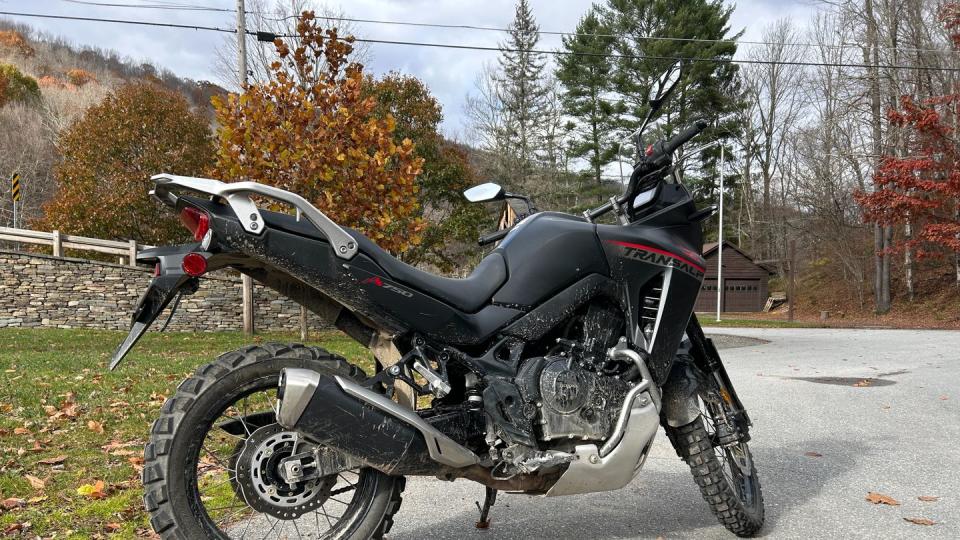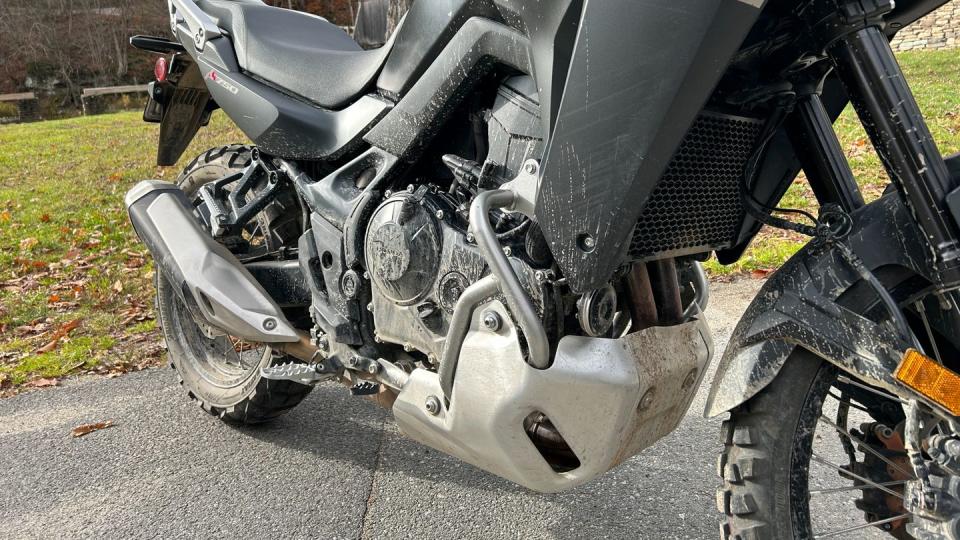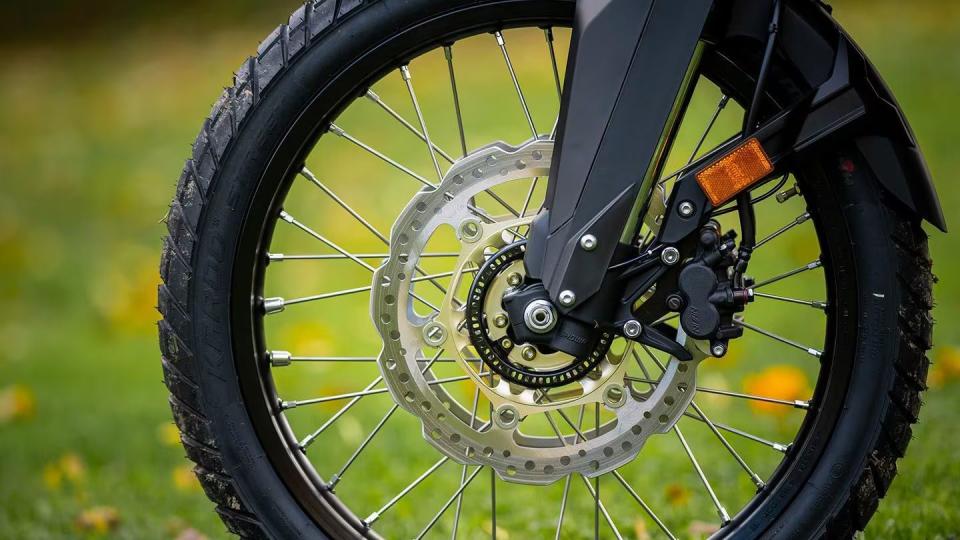2024 Honda XL750 Transalp Wails Beautifully, Carves Up Backroads

Honda is reviving its most iconic adventure touring nameplate, the Transalp, for the US market in 2024 and the results are in.
Known as the 2024 Honda XL750 Transalp, the middleweight adventure bike splits the difference between overweight tourer and dual sport.
With an engaging 755cc inline twin, adjustable suspension on both ends, and uber-comfortable ergonomics, the Transalp is back and better than ever.
I promise this won't be a whiny male diatribe about the importance of height. However, the length of your inseam does matter when it comes time to swing a leg over an adventure bike's saddle. At least in most cases, it does, as the ever-popular and fast-growing adventure motorcycle category continues to bulk up and grow a few inches with each generation.
Cubic centimeters are increased, hard bag attachments become standard, and the once fancy adaptive plus electronic suspension is now run of the mill, at least at a certain price point. The pioneers of adventure riding will tell you that you really don't need any of it. Also true: a dual-sport, a backpack, and some extra gas will deliver the same experience.

But there is a more nuanced approach to understanding why the adventure class has become so large and so expensive. I mean, seriously, since when did it cost $18,000 (not including gear and luggage) to go get lost in the woods with your friends?
Enter the 2024 Honda XL750 Transalp, a perfect anecdotal example of reasonable displacement, size, and pricing in the modern adventure bike world. Released to the US market for 2024, the Transalp nameplate is one that is steeped in cult-status nostalgia, seeing as Honda only sold the original Transalp for two years (1989–1990) in the US.
At its core, the original Transalp blueprint has remained largely modern, centered around a 755cc liquid-cooled, 270-degree crank, Unicam inline-two-cylinder.
That's good for 83 hp at 8500 rpm and 55 lb-ft of torque, though the mid-to-high revolution range is where the bulk of the power is available thanks to its short stroke.
Noticeably, the Transalp checks the passion box better than its smaller adventure lineup sibling, the CB500X. Powered by a 471cc parallel twin, the CB500X's engine is easy to use and smooth enough save for brief windows of seat buzz, though it lacks much in the way of excitement.
If the smallest of the three twin-cylinder engines in Honda's adventure lineup is agricultural, the Transalp's engine wails beautifully as you twist beyond 4000 rpm. Low-end torque is plentiful for the abundant stop-and-go traffic here in New York, but the linear increase in power as you climb to 10,000 rpm is a smooth reward all on its own.

Choose your riding mode carefully, as the effects on throttle response and power delivery are palpable. Traction control, engine braking, and ABS are all adjustable through the modes as well, though these changes aren't as apparent behind the bars.
This middleweight powerplant is paired to a 6-speed manual transmission with a slipper clutch plus a quick shifter up and down. Just like the CB1000R we rode earlier this year, the shift action is precise and simple to use without much feeling through your feet or hands. Similar to other Honda bikes, too, the clutch is rather light and easy to feel out in traffic.
The quick shifter requires certain footwork, and it's much more satisfying to bang through a set of upshifts than downshifts.
Being mindful of your throttle position and energy state will allow for smooth, clutch-less deceleration, though. For highway cruising or off-road crawling, Honda has clearly made strides to create a dynamic gear ratio, too.
This enthralling powerplant and consistent transmission are wrapped in a steel diamond frame sporting a 43mm preload-adjustable Showa SFF-CA inverted fork (7.9 inches of travel) up front and a Pro-Link rear suspension with a preload-adjustable Showa shock (7.5 inches of travel).
This suspension setup manages the trick of being road-savvy—particularly on slower-speed, technical roads—while also standing up to most loose surfaces.
We weren't able to test the Transalp on chunky rocks or cratering divots, though its lack of damping adjustment would encourage a slower speed through more rugged terrain.
Otherwise, the Transalp's suspension feels like a nearly perfect middle ground for commuting, backroad carving, and venturing far off the marked way. But its ergonomics are the main reason why the Transalp is so capable and comfortable. Saddled behind a wide, rising handlebar, the riding position is as natural as they come.
With a 21-inch front wheel and 18-inch rear wheel, the Transalp checks the box of being a true adventure bike, though the 21-inch wheel is mostly beneficial for tire choices.

Even so, the bigger front wheel isn't perceptible when leaning the bike through sweepers, though it takes a little more effort to complete low-speed, parking lot maneuvers.
Similarly, it should be a good fit for most riders, though its 33.7-inch seat height could be a struggle for riders under 5-foot-6.
This slightly raised seat height means standing while riding is comfortable enough and you can see above sedans and hatchbacks ahead of you. Plus, the 33.1-inch wide bodywork makes for ample wind protection even at highway speeds.

Slowing the 459-pound machine is done through dual 310mm rotors clamped by a set of two-piston calipers up front and a single 256mm rotor connected to a single-piston caliper in the rear. ABS is standard on the Transalp and is switchable depending on the drive mode, loosening up for off-road duty in Honda's rally mode. Rear ABS can be fully defeated, too.
In terms of technology, Honda sticks with its 5-inch TFT display, which we're very fond of. It automatically adjusts to the lighting present and is easy to see through a visor, shadows, or even direct sunlight.

Now, all this comes at a price of $10,599, competing with the likes of Yamaha’s Ténéré, Suzuki's V-Strom 800DE, and Aprilia's Tuareg 660. In truth, the diverging numbers between these bikes and the Transalp are mostly negligible, excluding Honda's power benefit and weight loss.
To be clear, I highly recommend the 2024 Honda XL750 Transalp, both for its retro-inspired look and its exemplary riding behavior. But I think the more central matter is considering what adventure bike you really need.
Sure, touring across Alaska might be better suited to 1300cc of displacement, even if the road turns into washboard. Trying to accomplish a number of the charted and mapped Backcountry Discover Routes is certainly better done on a true dual-sport.
But splitting the difference—the area that most motorcyclists truly ride—is best done on a Transalp.
If you ride motorcycles, do you spend much time off-road? If so, what kind of trails do you like best? Please share your thoughts below.

 Yahoo Autos
Yahoo Autos 